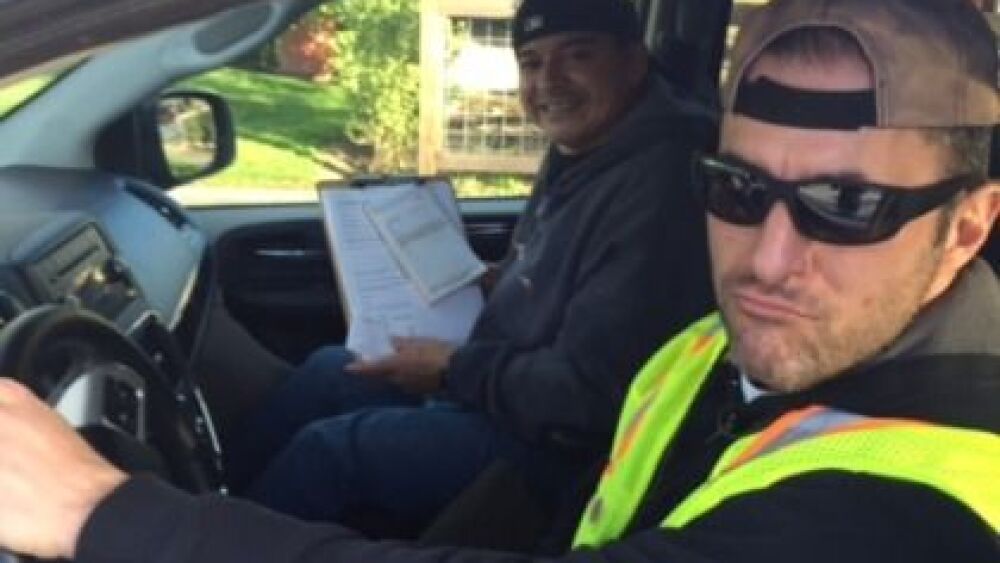Gang members often demonstrate a high level of criminal intellect when doing their dirty work. If they committed the same amount of time and energy to non-criminal pursuits, they could be successful members of society. For job security reasons, I’m glad they don’t.
It would be shortsighted to think cops can’t learn a thing or two from gang members that we can apply when chasing them down and locking them up.
1. Use of countermeasures
Gang members excel at hiding their identities to prevent being identified by law enforcement.
In the jurisdiction where I work we had a gang of Pacific Islander Crips who wreaked havoc on the community doing strong arm robberies and other crimes. Members of the gang would often let their hair grow very long, and then once they had been identified as suspects in crimes and wanted by the police, they would shave their heads bald. The radical change in their appearance made identification difficult.
Officers working undercover can learn from this. We can also modify our appearance so we are hard to identify. Case in point: I only wear sunglasses at work when I’m attempting to conceal my appearance. I never wear them on patrol or when in uniform. It’s a minor thing that makes me look different. The eyes are often the best way to identify someone. That is why, when pictures are taken of elite military unit personnel, their eyes are almost always obscured. I also feel it is important to maintain eye contact with suspects when not working undercover, as much of what we communicate is done through the eyes.
Another variation of changing appearance is by using “ditch clothes.” Gang members will intentionally wear an article of clothing – such as a shirt – that they will discard after committing a crime. A description will go out of a suspect wearing a black shirt, only for him to discard that shirt, leaving him wearing a white t-shirt he had on underneath.
When I do surveillance, I carry a bag with different items of clothing I’ll swap out. I usually change hats often when doing surveillance while in a vehicle. Another technique I learned from gangsters is wearing safety vests. Many crooks wear bright orange or yellow safety vests when committing crimes. Why? It is called, “hiding in plain sight” and it works well. A crook appears to be a construction worker or technician when, in all actuality, they are just crooks doing crook things. I often wear one of these vests when doing surveillance.
2. Changing/varying routines
Gang members will change the locations and times they hang out in certain locations. They might hang out on one block in their turf and suddenly switch to another block.
Gang investigators also need to switch it up. I’ve had crooks tell me the exact days and hours that I work based on when I interact with them. At a minimum this is unproductive since the gangsters know not to do their dirt during those hours. On a more serious note, it can be an officer safety issue as it makes you an easy target if they opt to ambush you.
I’m always been pleasantly surprised how much more criminal activity I observe when my team deploys during off hours and days. Not to mention the surprised look on the criminal’s face when they see us rolling around.
3. Staying ahead of changes in the law
When I started working the streets 17 years ago it was easy to pick out the gangsters. The proudly wore the colors of the gang. Norteno gang members wore red Pendleton type shirts, had red bandanas in their pockets and red belts. Like the movie “Colors,” it was easy to identify who was on what team. It was also easy to articulate their gang involvement in gang predicate reports. This resulted in long jail and prison terms.
Now, most gangsters wear neutral colors, stay away from obvious gang tattoos and avoid making admissions to law enforcement regarding that type of activity. They adapted to the laws.
We have to constantly evaluate and modify our tactics, techniques and procedures to stay one step ahead of gang member activity. Using the previous example, while testifying in court, investigators need to articulate that gangsters used to wear bright colors but now they don’t due to increased penalties brought on by gang enhancements. A good investigator can use this to show a high degree of criminal sophistication by gang members who have learned from their mistakes. Turn this around and use this against them!
Learn from the opposing team and adapt your policing strategies. Remember, even the hound can learn from the fox.



